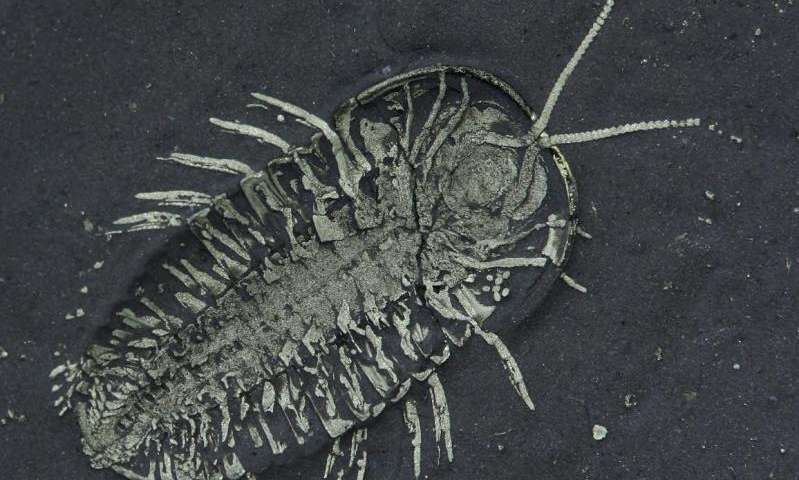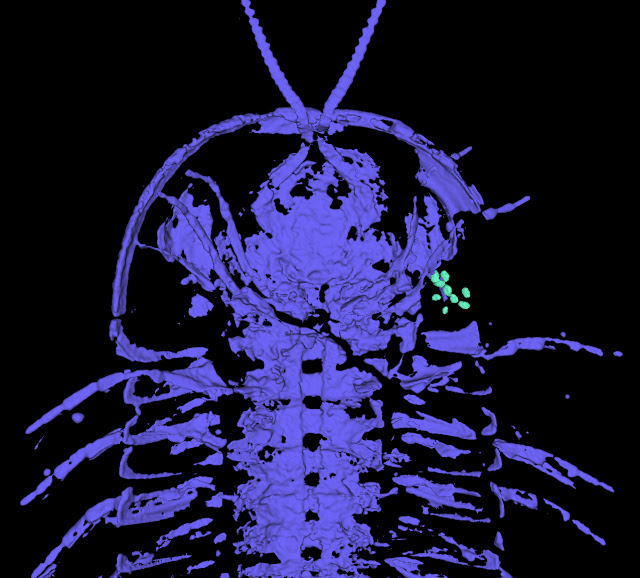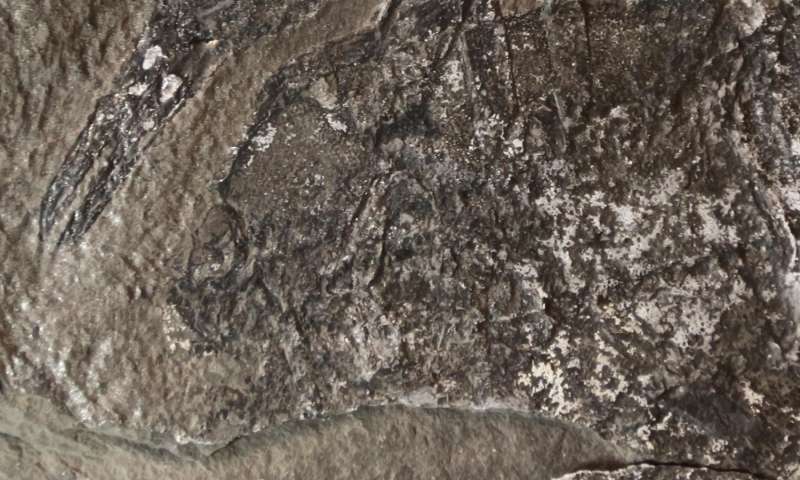Trilobites look like ancient woodlice but they differ in that they lived in the sea and had soft parts. They go back 450 million years ago – very old on the tree of life …
 … at https://phys.org/print404549366.html … a fossilised trilobite in a rock was cracked open recently to reveal it had its eggs still attached. How quickly would that have to have been buried and preserved – instantaneously one would think. The eggs are still attached to the body which is remarkable – and would have been soft as butter when fossilised. See also https://archaeologynewsnetwork.blogspot.co.uk/2017/01/first-ever-discove… …
… at https://phys.org/print404549366.html … a fossilised trilobite in a rock was cracked open recently to reveal it had its eggs still attached. How quickly would that have to have been buried and preserved – instantaneously one would think. The eggs are still attached to the body which is remarkable – and would have been soft as butter when fossilised. See also https://archaeologynewsnetwork.blogspot.co.uk/2017/01/first-ever-discove… …
 which shows the eggs.
which shows the eggs.
At https://phys.org/print404572410.html … a trove of Jurassic marine fossils have been found near Banff in Alberta – lots of soft bodied specimens not usually preserved. These include lobsters, shrimps, fish, octopi and the ichthyosaur (a marine reptile). The latter have been found in Britain – in a gravel pit at Milton Keynes for example. The next stage in the research is to investigate how so many organisms came to be fossilised together. They seem to be part of a major extinction event. Another point to address – if there was an inland sea in the middle of N America were the fossils left behind when it suddenly emptied?
 … which is a lobster.
… which is a lobster.
At https://phys.org/print404549689.html … a fossilised iguana found in Montana, dating from the Cretaceous (the geological period following on from the Jurassic).
